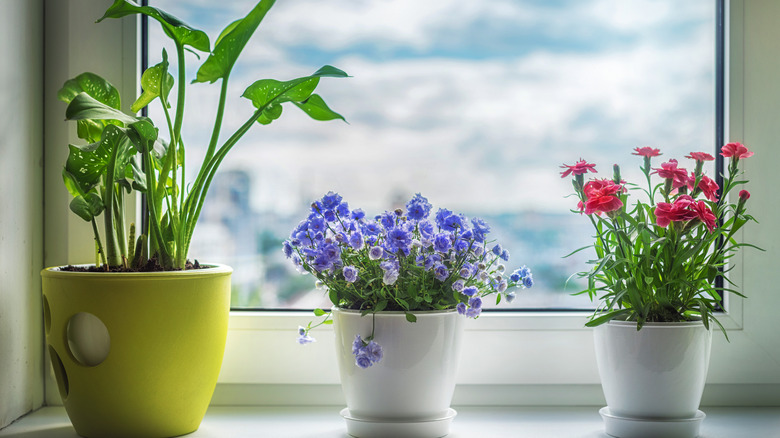How To Get Your Indoor Plants To Bloom In The Winter
During winter, when days are shorter and the air is colder, you may think your houseplants are done blooming until spring, but this does not have to be the case at all. There are plenty of flowers that grow beautifully indoors during winter, and with the right care, many indoor plants will keep producing flowers through the colder months. Keeping your indoor plants healthy and happy for winter blooms involves giving them all the light they need, keeping temperatures steady, providing the right humidity levels, watering and fertilizing at the right frequency and amounts, and deadheading appropriately.
Keep in mind that a few plants never bloom indoors no matter what you do. If you have chosen plants that do bloom indoors, the key to those winter blooms you want is making sure your plants are healthy, happy, and getting all their needs met. Taking care of all these needs is simpler than it may sound.
The amount of light a plant needs is an important part of creating a healthy plant. While many plants have similar light requirements and can be grouped together, you need to know what plants you have and what light needs each has to group them successfully. Sunlight is not as bright and is shorter in the winter. For the best sunlight, place your light-loving plants in a south or west-facing window for 6 to 8 hours daily minimum. If there isn't enough natural light coming in through the windows, first ensure your windows are clean, but you can also use one of these 5 types of grow lights for your indoor plants to supplement what the plants aren't getting from natural light.
Additional steps to get winter blooms from your indoor plants
Keep your plants away from heat vents, drafty windows, and exterior doors that are opened and closed frequently letting gusts of cold air in, which can all affect your plants negatively. It is important to the health of your plant to keep the temperature steady. The majority of flowering plants prefer a temperature between 65-75 degrees Fahrenheit and about 10 degrees Fahrenheit cooler at night. Humidity can also be an issue for some plants especially during the winter when the air is dryer. The best humidity is between 40% and 50% for most houseplants. To increase humidity, use a humidifier, move plants to a bathroom, or place trays of pebbles and water close-by.
In winter, most houseplants have a reduced watering schedule due to slowed growth. They tend to do well when the soil is allowed to almost dry out between watering times. The most common way to check that you're not overwatering is to simply use your finger and poke it 2 inches into the soil and when the top 2 inches are dry, water the plant. You can also use the eco-friendly toothpick hack to never overwater your plants again — stick a wooden toothpick in the soil for a few minutes, then pull it out and if it has darkened you don't need to water.
Deadheading encourages your plants to produce more flowers to replace what is removed so stay on top of this easy and light pruning method. Fertilizing during the winter isn't usually necessary with most houseplants, but you can keep going with a bloom-friendly addition in small doses for some plants to encourage flowering.

